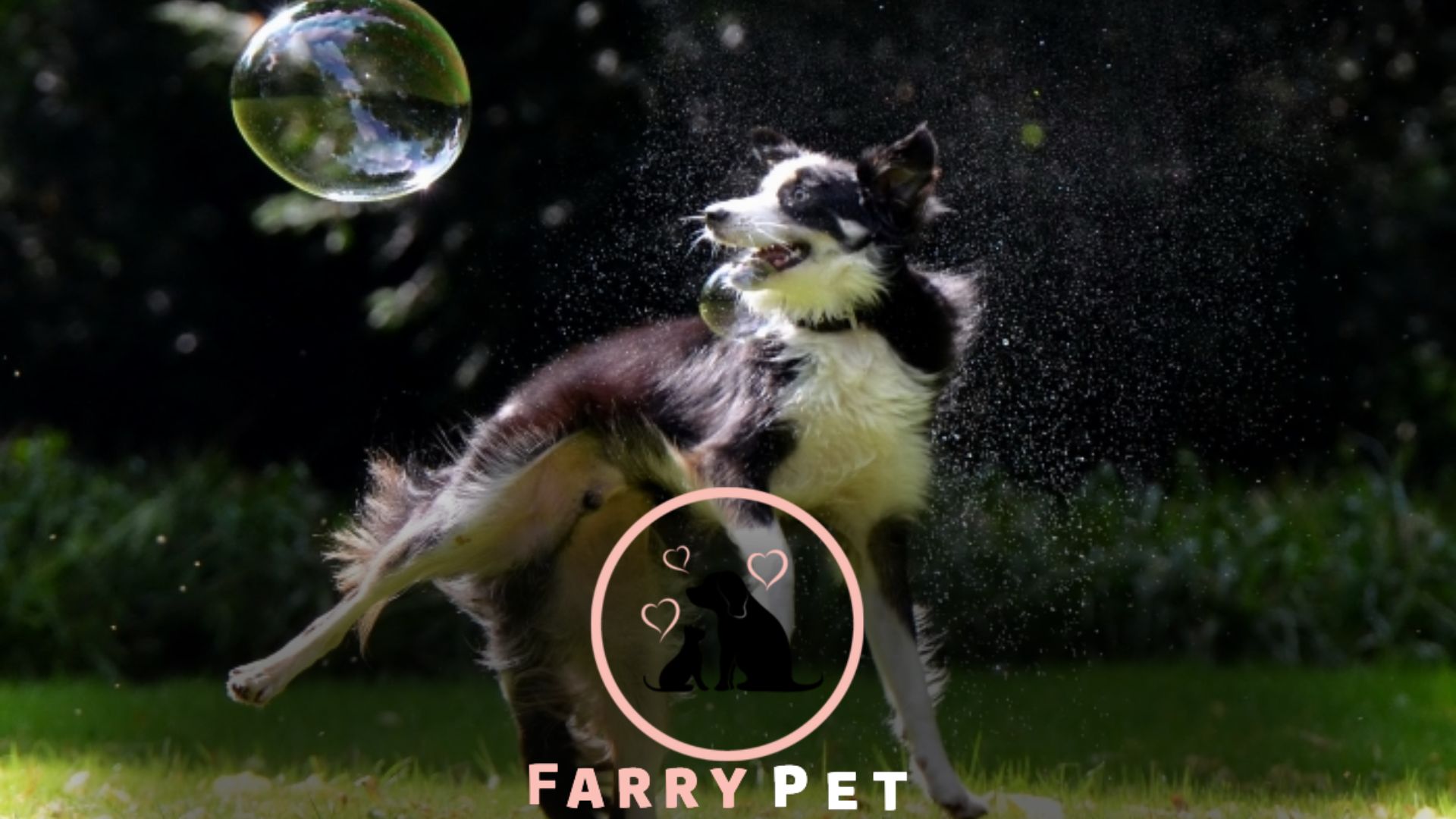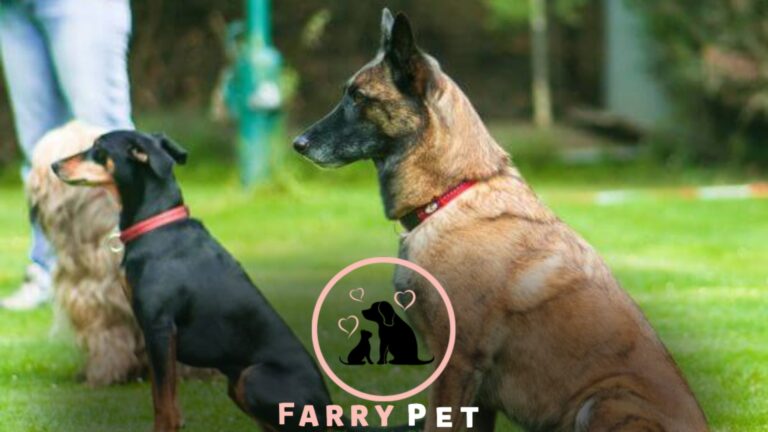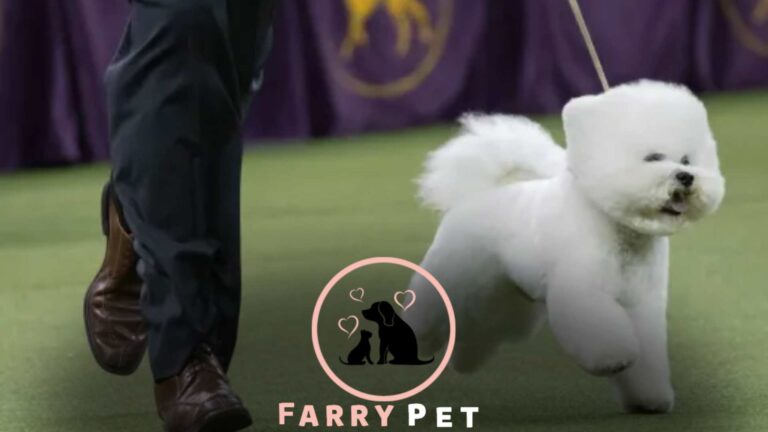
Bubble theory dog training is a method that focuses on positive reinforcement to shape desired behaviors in dogs. This training approach emphasizes creating a positive and stress-free learning environment for dogs, using rewards and praise to encourage proper responses to commands and cues.
By utilizing bubbles as a visual marker for correct behavior, trainers can effectively communicate with dogs and reinforce desired actions. With bubble theory dog training, dogs can learn new behaviors, improve obedience, and strengthen the bond with their owners.
This training method is increasingly popular among dog owners who prioritize positive, gentle, and effective training techniques for their furry companions.
Understanding Bubble Theory Dog Training
Bubble theory dog training is a unique approach that emphasizes creating a protective ‘bubble’ around your dog. This theory focuses on establishing trust, positive reinforcement, and clear communication.
By building a strong bond with your canine companion, you can effectively shape their behavior and responses.
One of the key benefits of bubble theory dog training is that it fosters a harmonious relationship between the dog and their owner. This training promotes mutual respect and understanding, leading to a well-behaved and happy dog.
Additionally, bubble theory dog training ensures that your furry friend feels safe and secure, which is crucial for their well-being.
With this training method, you can create a positive and supportive environment for your dog’s learning and development. One common question among dog owners is, ‘Does neutering a dog help with potty training?’
Establishing a Strong Foundation
Bubble theory dog training focuses on establishing a strong foundation through building trust and a strong bond with your dog. Understanding your dog’s behavior and needs is crucial in this training approach.
By introducing positive reinforcement techniques, you can effectively encourage desired behaviors and discourage unwanted ones.
Training should be based on communication, consistency, and mutual understanding between you and your dog. By using rewards and praise, you can create a positive learning environment that motivates your dog to participate in the training process actively.
With bubble theory dog training, you can develop a deep connection with your dog while teaching them important skills and behaviors.
This method emphasizes the importance of patience, consistency, and empathy, allowing you to create a harmonious and fulfilling relationship with your furry friend. Ethical considerations come into play when discussing dog training, leading to the question, ‘Is it illegal to train your dog to attack?
Implementing Bubble Theory Techniques
Bubble theory dog training is a method that focuses on creating a safe and controlled environment for effective training. The technique involves setting boundaries and rules to establish clear expectations.
Communication is encouraged through body language and signals, ensuring a deep understanding between the trainer and the dog.
This approach emphasizes the importance of consistency and structure, as a well-established routine helps dogs feel secure and confident.
Pet owners can foster a positive and harmonious relationship with their furry companions by implementing bubble theory techniques, promoting mutual trust and understanding.
By employing these methods, trainers can effectively address behavioral issues and help dogs learn and grow in a supportive and nurturing environment.
Key Principles of Bubble Theory Dog Training
Bubble theory dog training focuses on promoting confidence and self-control in your dog through calm and assertive energy. This training method emphasizes establishing a balanced and positive relationship with your dog.
You can effectively communicate your expectations and establish clear boundaries by maintaining a calm and assertive demeanor.
Rewards and positive reinforcement play a crucial role in this training approach, as they help reinforce desired behaviors and motivate your dog to continue learning.
By understanding and applying the key principles of bubble theory dog training, you can effectively train your dog while maintaining a harmonious and respectful relationship.
Say goodbye to ineffective methods and hello to a happier, well-behaved dog!
Addressing Common Challenges and Issues
Bubble theory dog training is a proactive approach that tackles common challenges and issues head-on. Aggression and fear-based behavior in dogs can be effectively addressed through this training method.
By correcting unwanted habits and behaviors, trainers can help dogs overcome these issues.
Successful training requires overcoming barriers that may hinder progress. Bubble theory seeks to bring out the best in dogs through a tailored approach that focuses on positive reinforcement and clear communication.
With this training method, trainers aim to build a strong bond with their canine companions, fostering trust and understanding.
By implementing bubble theory dog training techniques, trainers can create a safe and supportive environment that encourages dogs to thrive.
Case Studies: Real-Life Examples
Bubble theory dog training has consistently proven effective in training dogs, as evidenced by these real-life case studies. These success stories highlight the positive outcomes achieved by implementing bubble theory techniques.
Dogs trained using bubble theory have showcased remarkable progress, both in terms of obedience and behavior modification.
With this training approach, dog owners have witnessed significant transformations in their pets’ overall conduct and responsiveness.
Bubble theory provides a practical and results-oriented training method and emphasizes the importance of building a strong bond between the trainer and the dog.
The success of these case studies further reinforces the effectiveness of bubble theory dog training in achieving desirable outcomes for dogs and their owners. One common question among dog owners is, ‘Does neutering a dog help with potty training?
Beyond Training: The Long-Term Impact
Bubble theory dog training goes beyond traditional methods, emphasizing a long-term impact. It focuses on strengthening your bond and trust with your furry companion. You can create a harmonious relationship with your dog by incorporating bubble theory principles into your everyday life.
This unique approach recognizes that training is not solely about commands and obedience, but rather about understanding and communication. It encourages positive reinforcement and rewards to encourage desired behaviors.
With bubble theory, you’ll learn to connect with your dog on a deeper level, enhancing your connection and mutual understanding.
By prioritizing trust, respect, and communication, you can build a strong foundation that will benefit you and your canine friend for years.
Conclusion: Embracing Bubble Theory Dog Training
Bubble theory dog training is a revolutionary approach that encourages dog owners to view their pets as individuals with unique personalities, rather than just generic canines.
This methodology emphasizes positive reinforcement and effective communication to create a safe and trusting environment for learning.
By creating a “bubble” of focused attention and clear boundaries, the dog and the owner can establish a strong bond based on mutual respect.
The key principles of bubble theory dog training include understanding canine behavior, tailoring training techniques to individual dogs, and promoting consistency and patience.
There are numerous benefits to embracing this method, such as improved obedience, reduced anxiety, and enhanced overall well-being for both dogs and their owners.
To delve further into this training approach, recommended resources are available for individuals interested in learning and implementing bubble theory dog training with their beloved pets.

Frequently Asked Questions
What is Bubble Theory?
Bubble theory is a concept that explains the formation and behavior of economic bubbles. It suggests that market prices for certain assets can significantly deviate from their intrinsic values.
These bubbles are characterized by rapid price increases driven by speculation and investor sentiment.
Eventually, the bubble bursts, leading to a sharp decline in prices. Bubble theory emphasizes the role of investor psychology and herd mentality in driving these market movements. It suggests that excessive optimism and greed can fuel the formation of bubbles.
Some well-known examples of bubbles include the dot-com bubble in the late 1990s and the housing bubble in the mid-2000s. Understanding bubble theory can help investors and policymakers identify and manage potential risks of speculative market behavior.
What Method Does Cesar Millan Use?
Cesar Millan uses a method based on calm assertiveness and understanding dog psychology. His approach focuses on helping dogs become balanced and well-behaved by addressing their energy needs, providing exercise and discipline, and establishing rules and boundaries.
This method emphasizes the importance of being a confident and calm pack leader to establish trust and respect with the dog.
Using positive reinforcement, clear communication, and consistent training techniques, Cesar Millan helps dogs overcome behavioral issues and achieve a more harmonious relationship with their owners.
This method has effectively rehabilitated even the most challenging dogs and is widely recognized by owners and professionals.
What Are the Three Styles of Dog Training?
The three styles of dog training are positive reinforcement, dominance-based, and balanced training. Positive reinforcement training rewards desired behaviors with treats or praise to encourage the dog to repeat those actions.
Dominance-based training emphasizes establishing the owner as the alpha and using techniques like physical corrections and strict rules to assert control over the dog.
Balanced training involves a combination of positive reinforcement and corrective techniques to achieve desired behaviors. Each style has its proponents and critics, and it is important for dog owners to choose a training method that aligns with their values and their dog’s needs.
Ultimately, effective training should be based on clear communication, consistency, and mutual understanding between the dog and the owner.
What Dog Training Method is Best?
The best dog training method is positive reinforcement. It involves rewarding your dog for good behavior rather than punishing it for bad behavior.
This method promotes a positive environment and helps build a strong bond between you and your dog. Positive reinforcement techniques include treats, praise, and toys as rewards.
By consistently using positive reinforcement, you can encourage desired behaviors and discourage unwanted ones. This method is effective and humane, and it helps create a happy and well-behaved dog.
Remember to be patient and consistent during training sessions for optimal results.
What is Bubble Theory Dog Training?
Bubble theory dog training is a positive reinforcement-based approach that recognizes and respects a dog’s instincts and behaviors.
Conclusion
Overall, bubble theory dog training offers a unique and effective approach to transforming your furry friend into a well-behaved and happy companion.
By focusing on positive reinforcement and gentle guidance, this training method helps dogs learn in a stress-free environment.
With its emphasis on building trust and understanding between dog and owner, bubble theory dog training sets the foundation for a strong and lasting bond. Whether you have a puppy or an older dog, this method can be tailored to suit your canine companion’s specific needs and personality.
By incorporating interactive games, problem-solving exercises, and clear communication, you can help your dog develop the skills to navigate the world around them confidently and easily.
So, if you’re looking for a training approach that prioritizes your dog’s emotional well-being while achieving valuable results, bubble theory dog training is worth considering.


![Can You Still Train a 1-Year-Old Cat? [Possibility Study]](https://farrypet.com/wp-content/uploads/2023/08/Packing-Tips-for-Moving-65-768x432.jpg)



